|
|
||
|
4 March 2024 |
||
|
- Plans for Non-Lapsable Defence Modernization Fund stayed
- The Pink Economy
- Grey Zone Warfare
- Panel of Experts to examine Kaleshwaram Project
- India seizes Dual-Use Items bound for Pakistan from China
- Legislators Immunity against Criminal Prosecution.
- Melanochlamys droupadi

- Plans for Non-Lapsable Defence Modernization Fund stayed
Context:
In recent news, the Ministry of Defence (MoD) notified Parliament of a proposal to establish a distinct mechanism, devised by the Ministry of Finance in conjunction with the MoD, aimed at exploring the creation of a specialized “Non-lapsable Defence Modernisation Fund.”
This initiative is driven by concerns regarding the drawbacks of the current non-lapsable pool system, which affects parliamentary oversight and accountability.

- The Non-Lapsable Defence Modernisation Fund (DMF) is envisioned to establish a dedicated reservoir of funds that carry over from one fiscal year to another, ensuring that any unspent funds are preserved for future initiatives in defence modernisation.
- Presently, defence funding in India operates on an annual cycle, resulting in the return of unutilized funds at the end of each financial year.
- The primary objective of the proposed Modernisation Fund is to supplement regular budget allocations and provide a predictable source of funding for various defence capability enhancement and infrastructure projects.
- The recommendation for such a fund stems from the 15th Finance Commission, which suggested the establishment of a dedicated Modernisation Fund for Defence and Internal Security.
- It proposed the creation of a non-lapsable fund within the Public Account of India to cater specifically to defence and internal security modernisation needs.
The necessity for non-lapsable funds arises from various factors:
1. Addressing Budgetary Constraints: Annual budget allocations often result in the surrender of unutilized funds, impeding efforts towards defence modernisation.
2. Ensuring Predictability: Non-lapsable funds ensure a consistent availability of funding, fostering stability and continuity in modernisation endeavours.
3. Enhancing Flexibility: These funds offer flexibility in addressing unforeseen circumstances and promoting long-term planning.
Non-lapsable funds hold significance in multiple aspects:
1. Continuity and Certainty: They assure consistent funding for defence modernisation, reducing the need for frequent requests for additional funds and ensuring project continuity.
2. Flexibility: These funds can be flexibly utilized to address unexpected requirements or contingencies that may arise during the year.
3. Long-term Planning: By allowing funds to carry over across fiscal years, non-lapsable funds facilitate strategic planning for defence modernisation projects, promoting systematic development.
CHALLENGES
1. Parliamentary Oversight: The creation of a non-lapsable fund may raise concerns regarding reduced parliamentary scrutiny and oversight over defence spending.
2. Operational Framework: The operational details and funding sources for the DMF necessitate careful consideration to ensure transparency and efficacy.
3. Interagency Collaboration: Seamless coordination between the Ministry of Defence and the Ministry of Finance is imperative for the successful implementation of the fund.
Conclusion
The proposal for a Non-Lapsable Defence Modernisation Fund reflects a proactive approach to address the challenges inherent in defence funding in India.
While offering several potential advantages, its implementation demands meticulous deliberation and collaboration among key stakeholders to uphold accountability, transparency, and efficient resource utilization in pursuit of national security objectives.
- The Pink Economy
The term “pink economy” or “rainbow economy” refers to the economic impact of non-heterosexual individuals.
In India, where attitudes towards the LGBTQ+ community are changing, it’s estimated that there are around 135 million LGBTQ+ individuals, making up about 10 percent of the population.
This demographic not only has significant potential for production and consumption but also influences market dynamics, representing a notable shift in the country’s economic landscape.
1. The Indian Scenario: Challenges and Opportunities
- The emergence of India’s pink economy reflects a sizable demographic with the potential to impact the nation’s economy. However, it’s hindered by widespread stigma and discrimination against the LGBTQ+ community.
- This aligns with the principles of queer economics, showing how societal attitudes affect economic outcomes.
- Discrimination in education and employment is prevalent, leading to high dropout rates in schools and limited access to formal education, which in turn restricts employment opportunities and hampers human capital development and economic growth.
2. Economic Implications and Imperatives
- The cost of homophobia in India ranges from 0.1 percent to 1.7 percent of GDP, resulting in economic losses ranging from 112 billion rupees to 1.7 trillion rupees.
- Stigma and discrimination constrain labor supply, reduce productivity, and contribute to socio-economic challenges such as increased rates of poverty, depression, and suicide within the LGBTQ+ community.
- Understanding the dynamics of the pink economy within the context of societal attitudes is crucial for achieving inclusive economic growth, which is essential for sustainable development.
3. Corporate Inclusion and Economic Advancement
Inclusivity and economic advancement go hand in hand.
- Corporations are increasingly recognizing LGBTQ+ inclusion as both a social responsibility and a strategic business move.
- This shift towards LGBTQ+ inclusion in the corporate sector reflects a broader societal trend towards acceptance and diversity recognition, laying the groundwork for a more inclusive and economically vibrant future.

|
Corporates |
Key Contentions |
Recommendations |
|
Godrej |
Adherence to global standards of LGBTQ+ policies is necessary for: |
Enhancing global competitiveness, Attracting diverse talent, Building brand image, New market opportunities and revenue streams, Anti-Discrimination workplace policy, Inclusive HR Approach, Awareness programs, Health insurance and related benefits |
|
Community Business |
Economic case for LGBTQ inclusion by unlocking the latent potential of LGBT individuals |
An inclusive LGBTQ space would create a dual appeal to both employees and customers, Anti- workplace harassment policies, Supportive HR practices o LGBT employee support network, LGBT-specific benefits, Respectful LGBT marketing, Include gender identity and sexual orientation as optional data points in employee surveys in India |
|
Open for Business |
The economic argument for promoting LGBT+ inclusion is set to positively effect: |
Economic Performance, Business Performance, Individual Performance, Partnering with LGBTQ+ groups, Support existing legal redress, Advocate for local policy changes in LGBTQ+ community |
|
Deloitte |
LGBTQ+ inclusion ensures enhanced workplace dynamics |
Identifies avenues for organisations to enhance the experiences of their LGBT+ workforce, Recognize and address the diverse experiences of LGBT+ employees, acknowledging intersectional aspects. |
- Grey Zone Warfare
Understanding Grey Zone Warfare
- Grey zone warfare refers to a middle ground between direct conflict and peace in international relations.
- It encompasses covert or indirect activities, making responses challenging in terms of scale.
- Such activities include economic actions, influence operations, cyberattacks, mercenary operations, assassinations, disinformation campaigns, and more.
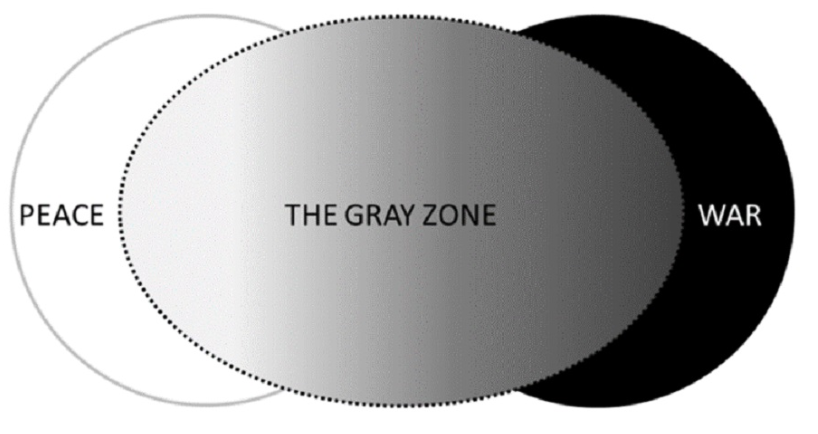
Origins and Characteristics
- Grey zone warfare has historical roots and has been prevalent in great-power competition, particularly during the Cold War era when the risk of escalation in direct conflicts between nuclear-armed nations was high.
- Nations resort to grey zone tactics to promote their national objectives through covert aggression or obfuscated attribution.
Examples of Grey Zone Warfare
- Recent actions by Russia and China are often cited as examples of grey zone warfare.
- For instance, China’s activities in the South China Sea, such as territorial claims and military presence, and military actions near Taiwan, such as regular fighter flights over the strait, exemplify the use of grey zone strategies.
- The US has also engaged in similar tactics, including economic sanctions, import duties, and maritime reconnaissance.
Challenges and Implications
- Grey zone warfare poses unique challenges distinct from open conflict, requiring appropriate responses.
- Actions in the grey zone can escalate in multiple dimensions and lead to unintended consequences, complicating crisis management.
- These tactics aim to project strength, normalize disputed claims, and bait adversaries into escalation.
Role of the Chief of Defence Staff (CDS)
- The creation of the Chief of Defence Staff (CDS) was recommended in 2001 by a Group of Ministers (GoM) studying the Kargil Review Committee (1999) report.
- Following the recommendations, the Integrated Defence Staff was established in 2002 to serve as the Secretariat for the eventual CDS. General Bipin Rawat became the first CDS of India, assuming office on December 31, 2019.
- The primary role of the CDS is to enhance operational synergy among the three service branches of the Indian military and minimize inter-service frictions.
- The CDS also serves as the head of the newly created Department of Military Affairs (DMA) within the Ministry of Defence.
- Acting as the single-point military adviser to the Defence Minister, the CDS advises on matters involving all three services, while service chiefs provide counsel only on issues concerning their respective services.
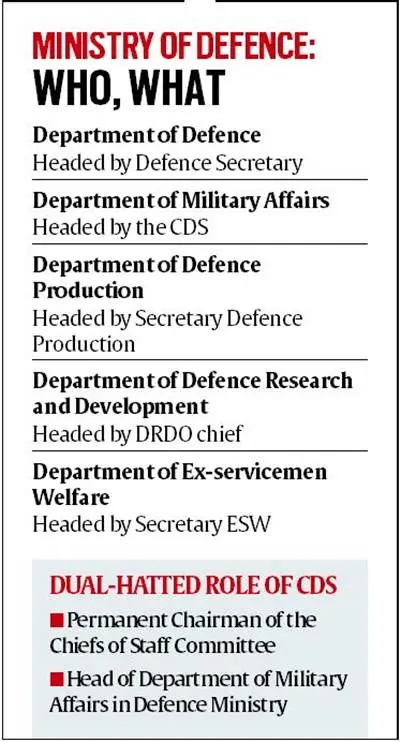
- Panel of Experts to examine Kaleshwaram Project – Dam safety in India
The National Dam Safety Authority (NDSA) has established a six-member panel to assess the condition of the three barrages in the Kaleshwaram Lift Irrigation Project (KLIP) – namely Annaram, Medigadda, and Sundilla.
The committee’s focus is to investigate the sinking of Medigadda barrage pillars and potential damage to the upstream barrages, Annaram and Sundilla.
- Indian dams, particularly those built with earthen materials, are more susceptible to deterioration.
- This vulnerability is exacerbated by factors such as concentrated rainfall patterns, leading to siltation and reduced storage capacity. Additionally, downstream areas face increased flood risks even without dam breaches due to rapid erosion.
- Ageing dams present significant risks, including safety concerns, higher maintenance costs, and declining functionality due to sedimentation.
- Unsafe dams pose threats to lives and properties, while decreased water storage capacity can impact food security by reducing agricultural water supply.
- Flawed siltation rates also contribute to increased flooding downstream of dams.
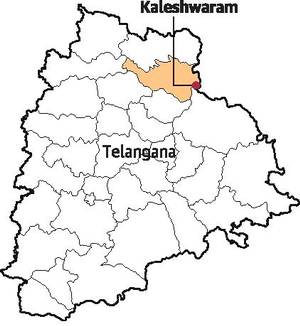
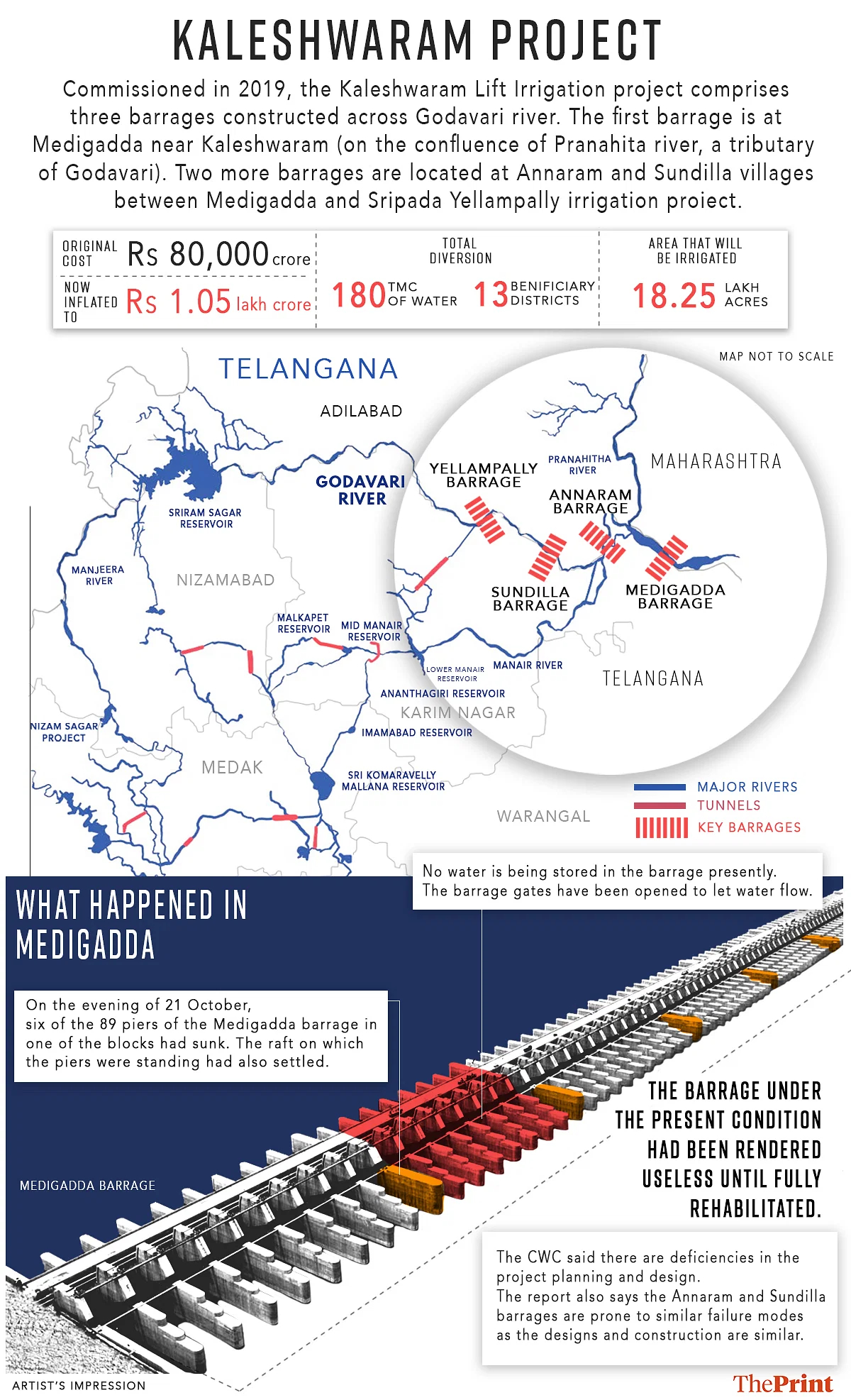
- India seizes Dual-Use Items bound for Pakistan
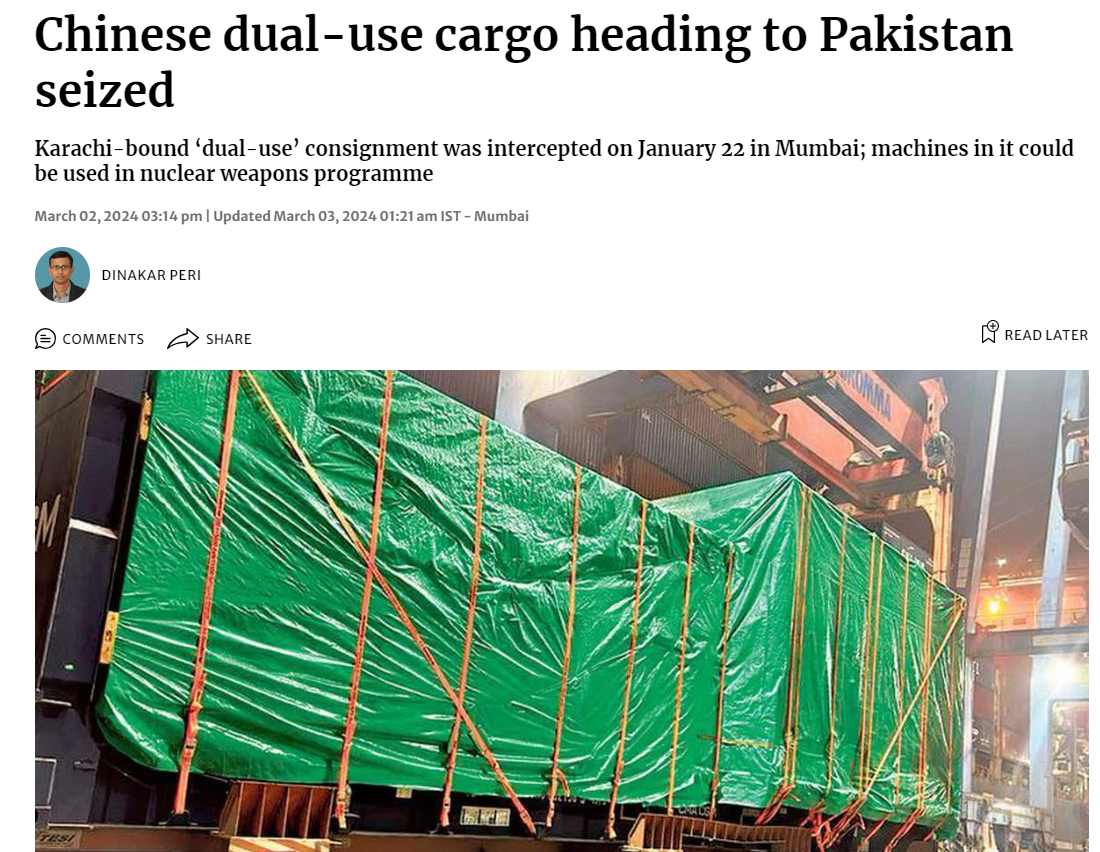 Context:
Context:
In recent news, Indian customs officials at Mumbai Port intercepted two advanced Computer Numerical Control (CNC) machines manufactured by GKD, Italy.
These machines were being transported from China to the port of Karachi, Pakistan. The CNC machines are crucial for producing parts used in Pakistan’s missile development program.
Dual-use items
- Dual-use items are commodities with potential applications in both civilian and military contexts.
- They undergo stringent regulation due to the risk of being repurposed for military or terrorist activities after initially being designed for civilian purposes.
- Examples of dual-use items include global positioning satellites, missiles, nuclear technology, chemical and biological weapons, night vision technology, drones, precision-engineered aluminum pipes, and specific types of ball bearings.
Various global control mechanisms exist for dual-use items:
1. Missile Technology Control Regime (MTCR): Established in 1987 by G-7 countries, MTCR aims to limit the proliferation of missiles capable of delivering weapons of mass destruction. It consists of 35 member countries, including India, which joined in 2016.
2. Wassenaar Arrangement (WA): Formed in 1996 with 42 participating states, WA aims to prevent the accumulation of conventional arms and dual-use goods and technologies that could destabilize regions. Member countries implement controls on listed items to avoid enhancing military capabilities. India has expressed interest in joining to strengthen its export controls and non-proliferation efforts.
3. Australia Group (AG): Established in response to Iraq’s use of chemical weapons in 1985, AG initially focused on chemical weapons precursor chemicals and later expanded to include biological weapons prevention. It comprises 42 member countries, India became a member of the Australia Group (AG) on January 19, 2018. The group aims to harmonize international export controls on chemical and biological technologies.
4. Nuclear Suppliers Group (NSG): Founded in 1974 in response to India’s nuclear tests, NSG aims to control nuclear and nuclear-related technology to prevent proliferation. It consists of 48 participating governments and follows guidelines to prevent the spread of nuclear weapons through control measures. India not a part.
INDIA’S THINGS ON THIS
- India has established internal mechanisms to regulate Dual-Use Items (DUIs).
- The Director General of Foreign Trade (DGFT) oversees this regulation by managing the SCOMET list, which stands for Specialty Chemicals, Organisms, Materials, Equipment, and Technologies.
- The SCOMET list includes items with the potential for dual-use, such as special chemicals, organisms, materials, equipment, and technologies.
- Exporting SCOMET items is subject to stringent regulations, which may include obtaining a license or outright prohibition.
- These regulations are in line with various multilateral export control regimes and conventions to ensure alignment with international controls on dual-use items.
- Legislators Immunity against Criminal Prosecution.
Background and Context
Constitutional Provisions: Articles 194(2) (for MLAs) and 105(2) (MPs) of the Constitution grant legislators immunity from legal proceedings concerning their speeches and votes in Parliament and Legislative Assemblies.

P.V. Narasimha Case: In 1998, the Supreme Court upheld this immunity in the case of P.V. Narasimha Rao v State (CBI/SPE), ruling that legislators are shielded from criminal prosecution for bribery linked to their parliamentary actions.
Reasons for Reconsideration
- Sita Soren’s Case: The appeal by JMM MLA Sita Soren, accused of accepting bribes during Rajya Sabha elections, prompted a reevaluation of the Narasimha verdict.
- Interpretation Issues: Concerns were raised about the broad interpretation of immunity and its implications for combating bribery in legislative bodies.
Arguments Supporting Immunity
Absolute Protection: Advocates contend that legislators enjoy complete immunity from legal action under constitutional provisions. They argue that the Speaker holds authority to address moral infractions through expulsion.
Interpretation of Articles: The dissenting opinion in Narasimha sought to narrow the scope of immunity, but proponents stress adherence to the literal interpretation of constitutional language.
Arguments against
Completion of Offence: Critics argue that the offence of bribery is consummated upon acceptance of the bribe, irrespective of subsequent actions. They advocate holding legislators accountable from the moment the bribe is accepted.
Legitimate Legislative Actions: Distinguishing between legitimate and illegitimate actions, advocates assert that actions stemming from criminal conduct, such as vote-buying, should not be shielded by immunity.
Legal Interpretation and Statutory Compliance
- Prevention of Corruption Act, 1988: Critics highlight inconsistencies between the Narasimha ruling and the provisions of the PCA, emphasizing the need for alignment with anti-corruption legislation.
- Intent and Performance: Solicitor General Mehta underscored the disconnect between the Narasimha verdict and the intent of the Prevention of Corruption Act, particularly regarding the timing of criminal liability.
Way Forward
Balancing Integrity and Immunity: The court’s ruling will determine the delicate balance between upholding legislative immunity and ensuring accountability for criminal acts.
Interpretative Scrutiny: A nuanced interpretation of constitutional provisions is essential to address the evolving complexities of legislative conduct and accountability.
- Melanochlamys droupadi
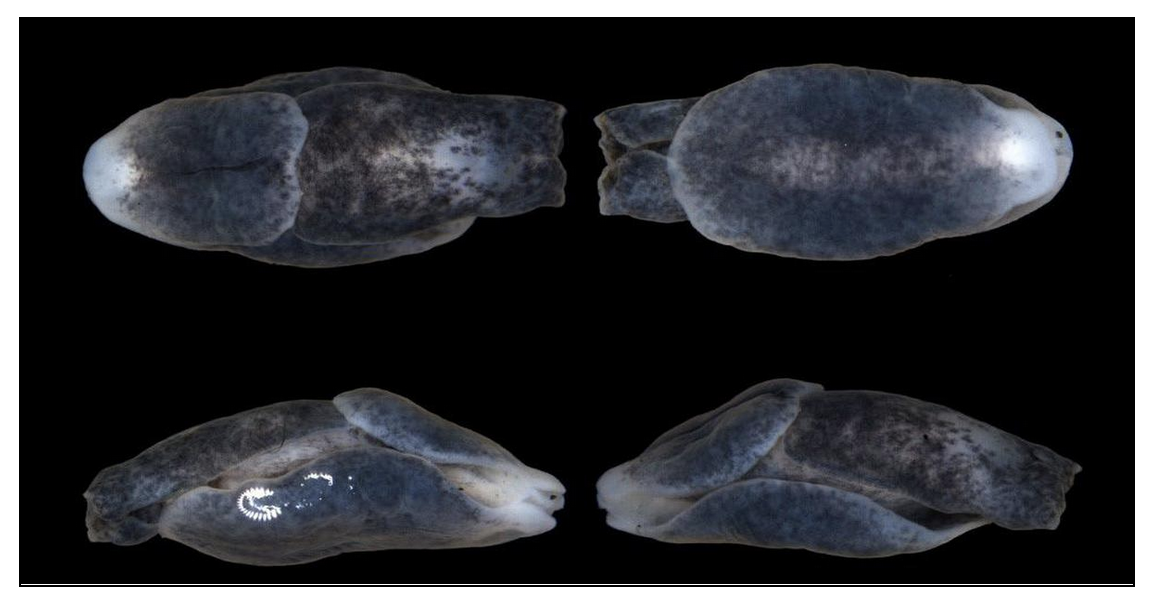
The species, named Melanochlamys droupadi, was discovered along the coasts of West Bengal and Odisha.
Morphological Characteristics of Melanochlamys Species:
– Genus Melanochlamys exhibits distinctive features, including a short, blunt, and cylindrical body.
– The dorsal surface features two shields, namely the anterior cephalic and posterior shield.
Unique Attributes of Melanochlamys droupadi:
– The species is small, brownish-black, with a distinct ruby red spot at the hind end.
– It is classified as a hermaphrodite.
– Reproduction occurs in the period between November and January.
Defensive Mechanism:
– Melanochlamys droupadi secretes transparent mucus, serving as a shield against sand grains while navigating beneath smooth sand.
– This defensive mechanism renders its body seldom visible.
Geographic Distribution:
- While species within this group are typically found in temperate regions of the Indo-Pacific Oceanic realm, Melanochlamys droupadi is among the three truly tropical species.
- Other tropical counterparts include Melanochlamys papillata from the Gulf of Thailand and Melanochlamys bengalensis from the coasts of West Bengal and Odisha.



